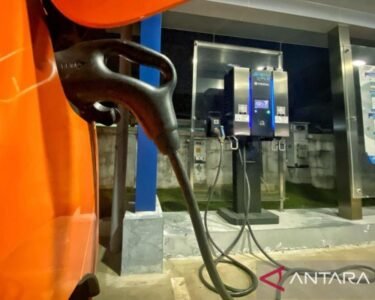The first-level checking (FLC) of electronic voting machines (EVMs) ahead of the Bihar assembly polls has found that 12.26% of ballot units, 4.96% of control units, and 4.67% of VVPATs were declared “FLC Rejected” following technical scrutiny across the state.
According to the Chief Electoral Officer’s (CEO) office, a total of 1,76,506 ballot units were checked, with 21,634 units failing to clear the inspection. Similarly, 6,389 out of 1,28,726 control units and 6,369 out of 1,36,317 VVPATs failed to clear the test. At the same time, officials said, a significant majority of the machines, “1,54,872 BU, 1,22,337 CU, and 1,29,948 VVPATs were found ‘FLC OK’” and cleared for use in the upcoming polls.
“A total of 189 engineers from ECIL were deputed to carry out the checks across the state. The rejected machines are being sent to ECIL in Hyderabad for repairs, while the status of all units, whether cleared or rejected, was updated daily on the EMS 2.0 portal,” officials said.
The FLC process, described by the Election Commission as “a preliminary and crucial technical inspection process,” was conducted from May 2 to June 25 under the supervision of district election officers and ECIL engineers, with representatives from all major political parties invited to observe. The FLC process was monitored through live webcasting in all districts, allowing real-time oversight by the Election Commission and the CEO’s office.
“After completion of FLC, the list of approved EVMs was provided to all recognised national and state parties at the district level,” officials said, stressing on transparency in the process.
The electoral officers noted that all 12 recognised national and state-level political parties were informed about the FLC programme at least six times and urged to send their representatives. “Over 200 letters were sent to parties that were not attending, urging them to participate,” sources said.
The election body mentioned that the state-level meeting chaired by CEO Vinod Singh Gunjiyal on May 13 reviewed party participation and the progress of the FLC. “Most major parties, including the BJP, Congress, RJD, JD(U), LJP (Ram Vilas), CPI(M), CPI(ML), and BSP, actively participated across districts, while others such as the Aam Aadmi Party, RLSP, and RLJP had limited presence. The National People’s Party did not participate in any district,” officials said.
Story continues below this ad
Officials noted that party participation was “robust in 31 districts”, including Patna, Muzaffarpur, and Bhagalpur, while seven districts – Banka, Darbhanga, Gaya, Gopalganj, Nalanda, Supaul and Kishanganj – saw comparatively fewer party representatives during the FLC.
“All parties expressed satisfaction with the quality and arrangements of the process,” the electoral officials said.
They informed that the Election Commission of India and the CEO’s office maintained “intensive and continuous monitoring” of the process through live webcasting and field visits. “28 observers, including senior officials and EVM nodal officers from other states, were deployed for on-ground supervision,” EC officials said, with CEO Vinod Singh Gunjiyal personally inspecting FLC halls in Patna and Katihar.
With the completion of the FLC, officials said Bihar is now “fully prepared for the upcoming Assembly elections, reaffirming the commitment to a transparent and credible electoral process.”





